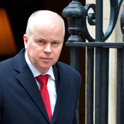What will the political parties say about public spending in the run-up to the 2015 election? We know how the Conservative election script goes, with the mantra of "no alternative" repeated through every party political broadcast and media appearance.
The Labour line is less clear. The party still has a credibility problem, with the public unwilling to fully trust the two Eds with the economy. So far this has led to an indistinct and cautious response, with Labour hugging close to coalition spending plans in the hope of avoiding undue political controversy. But this may soon become untenable, when Labour takes a close look at the huge damage that budget plans for 2016 and 2017 will bring. A massive new tranche of social security cuts and the eventual halving of the budgets of many public services may simply prove too much to stomach.
There are alternatives however. The Fabian Society Commission on Future Spending Choices publishes its final report today and concludes that a future government can spend more than the coalition plans and still have fiscally credible plans for deficit reduction. But to counter charges that any extra money is just profligacy, we recommend that any party wanting to spend more should also explain how the money will be spent differently, as an investment in long term prosperity and future generations.
Looking to the future means delivering sound public finances that do not pass on rising debt. But it also means carefully shaping the composition of public spending to ensure that expenditure which will bring long term benefits is not squeezed out by competing priorities. The decade after the 2007 financial crisis will see spending on future-oriented activity and on capital projects decline significantly as a share of national income. The goal of a 2015 government should be to stop that process and eventually put into reverse.
Spending on healthcare and pensions will always be a major component of government expenditure but they should not be allowed to squeeze out infrastructure, skills, early years, innovation and job creation. These areas should be protected, just like NHS spending, while budgets remain under pressure. Then once the deficit is closed, the aim should be to raise spending in these areas relative to GDP.
To safeguard healthcare and pensions and also prioritise skills and capital something has to give. The answer is tax. Since the mid-1980s taxation as a proportion of the economy has been more or less constant, at 38 per cent of GDP. If it is to remain so for another 20 years it will no longer be possible to provide a cradle-to-grave welfare state, let alone prioritise economically beneficial investment. Gradual, long-term tax increases are needed.
This is not a comfortable conversation for politicians to begin: that’s why they need think tanks. But far better to be open about difficult trade-offs then sleepwalk into a future crisis. In future spending decisions must be made with a 20 year time frame in mind, because the view you take on the evolution of spending over decades should have a direct bearing on short term choices. The Fabian Commission therefore proposes that Spending Reviews should begin with the governments setting out their view on the evolution of spending over decades.
The Labour Party may not especially relish this conversation, but the next election will include arguments about different visions for tax and spending. It is time to prepare the ground.
Andrew Harrop is General Secretary of the Fabian Society. You can read "2030 Vision: The final report of the Fabian Commission on Future Spending Choices" on the Fabian Society website.












